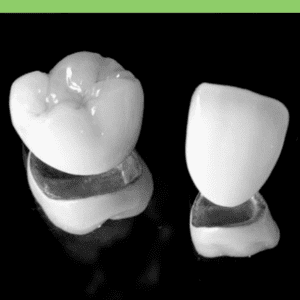 These crowns are very strong and provide a stronger bond than regular porcelain because it is bonded to a metal structure. It’s also extremely durable and can be color matched to your adjacent teeth.
These crowns are very strong and provide a stronger bond than regular porcelain because it is bonded to a metal structure. It’s also extremely durable and can be color matched to your adjacent teeth.
On the down side, because porcelain is harder than dental enamel, there may be more wearing to the opposing teeth with this crown type compared with all-metal or composite/resin crowns. Second only to all-ceramic crowns, PFMs look the most like natural teeth.
